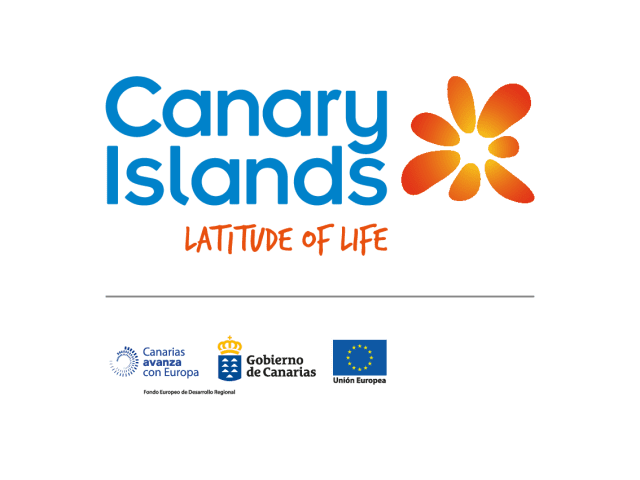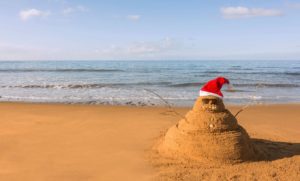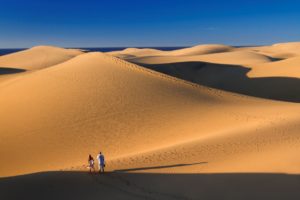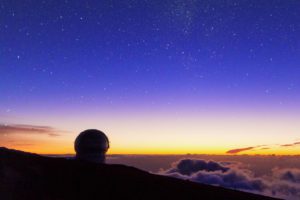 Christmas under the Sun
Christmas under the Sun
Just a few hours away from most European cities, you can sunbathe and swim in the sea all winter long. Experience some of the islands’ unique Christmas traditions for yourself!
The Canary Islands make up one of the most visited archipelagos in the world. Every December they welcome around 1.5 million visitors, most hailing from European countries such as the UK, Ireland, Germany, Sweden or Norway. Whether you like spending Christmas the traditional way or are interested in mixing things up, here are ten reasons why you should spend Christmas in the Canary Islands.
The best weather in Europe, even in December
With an average temperature of 22 degrees and 8 hours of sunshine every day, the Canary Islands make for the perfect relaxation destination. Start the new year the right way – by the beach!
The Canary Islands have the longest daylight hours in Europe, even in December. The sun shines all year round, with an average of just 3 days of rain a month! Spending your days in the sun promotes positivity, clear skin and increases much needed levels of vitamin D in the body.
Glide down hills…of sand
If you’re not quite ready to give up the joy of snowy slopes, you can try sand-boarding on the wonderful dunes of the archipelago instead. The same adrenaline kick with a much softer landing!
The greatest sand nativity scene in Europe
Swap snow men for nativity scenes on the beach. In the Canary Islands, nativity scenes are usually created outdoors. Each Christmas, the town-hall of Gran Canaria summons international artists, who, together with local sculptors, transform around 2,000 tons of sand into a life-sized, breathtaking nativity scene.
Christmas markets and traditional sweets
There’s no better way to get a taste of the traditional Canarian Christmas delicacies than taking a trip to one of the many open-air markets on the islands.
Try the quesadilla from El Hierro, a deliciously smooth cheesy cinnamon pastry, baked since the Middle Ages. Don’t forget to try the Torta Vilana of La Gomera, the rapaduras of La Palma, and finally you cannot miss the Truchas, a household Canarian Christmas favourite.
Seafood for the Christmas Eve get together
Known as ‘Nochebuena’ in Spanish, on Christmas Eve families get together to celebrate their good fortune. Families share a fabulous, hearty meal where the tables are laid with exquisite delicacies.
New year’s swim
Welcoming the New Year outdoors (and staying warm whilst doing so!) is not something you can do in many European countries.
Start the evening off with a delightful shellfish dinner, continue the night with a gala New Year’s Eve party under the starry sky and finish the celebrations the next morning with a traditional swim in sea.
This Canarian tradition will bring good luck, so you can start the year on the best possible foot.
Pick a star and make a new year’s wish
The Trade Wind breezes prevent clouds from forming over the Canary Islands; this is why the skies in the Canaries are amongst the clearest in Europe (and are legally protected by the Law of Protección de la Calidad Astronómica de los Observatorios). This law prevents light pollution, sound pollution, and controls flight patterns to prevent any interference with stargazing.
Due to the clear, protected night skies, the Canary Islands are an exceptional astrotourism destination all year round. Pick a star and make a wish. Who knows, maybe it will come true.
The Three Wise Men riding Canarian camels
Every January 5th, Melchior, Gaspar and Balthasar arrive in all the main cities of the Canary Islands. On their camels or mounted on their spectacular floats, the Three Wise Men march in a parade enjoyed by all.
Families watch with excitement as the Three Wise Men travel along stocked with gifts and good cheer. By night, whilst everyone sleeps, they visit each home delivering parcels full of toys and whatever the children have wished for.
If you miss the snow…
You can have it in the Canaries too. Mount Teide is the third highest volcanic structure in the world (after Mauna Loa and Mauna Kea in Hawaii). It is the highest peak on the Canary Islands. Standing at 3,718 meters tall, it often remains snowcapped from October until March. Watch the sunrise on the snow-covered Mount Teide.
Get the best of both worlds by spending a morning sunbathing on one of Tenerife’s wonderful beaches and travel up the slopes of the Teide in the afternoon to build a snowman.
All of this Christmas joy is only possible on the Canary Islands!
For more information please visit: http://www.hellocanaryislands.com
ENDS





